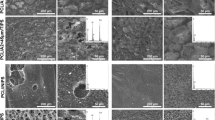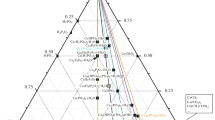Abstract
Biomembranes are frequently proposed as devices for “guided bone regeneration.” Such membranes consist generally of a thin sheet of polymeric material, mostly textured from polymeric yarns or clots, which all have a diffuse very fine winding porosity. The cross-section size of the holes of such porosity is nanometric (diameter < 0.1 μm); thus these holes can be indicated as nanoholes. Whatever the method of production, the surface density of nanoholes (number per square centimeter) has to be as high as possible. It is important also that no variation of this density occurs. The fine dimension of these microholes allows the crossing of small molecules (O2, CO2, H2O, sugars, many nutritional organic compounds and even some simple proteins) but not other larger molecules and particulates, including cells of any kind. These biomembranes have, consequently, a semipermeable behavior, providing the functional role which is the interposition of a barrier for the cells, separating the bone from the surrounding soft tissues. The kinetic of proliferation of osteoblasts is lower than that of fibroblasts. Most membranes of this kind are not resorbable. The main problem for the resorbable ones is the speed of size increase of the holes during the time. Their diameter must not exceed a threshold value until the reconstruction of bone is complete, otherwise soft tissue cells will invade the growing bone tissue with formation of undesirable mixed tissue. The present paper deals with a resorbable membrane made with a composite polymer/ceramic. A poly(ɛ-caprolactone)-block-poly(oxyethylene)-block-poly(ɛ-caprolactone) copolymer is the polymeric matrix which contains dispersed ceramic hydroxyapatite microgranules, a stiff filling additive. The main possible use is that of periodontal membranes. The copolymer, obtained by thermal polymerization of ɛ-caprolactone onto poly(ethylene-glycol), presents good biological tolerance, is resorbable under physiological conditions and can promote cell growth. Histological tests, performed 6 months after implantation, showed that the polymeric matrix is almost totally resorbed. New-formed bone colonizes even the innermost parts of the membrane, with bone trabeculae closely surrounding the hydroxyapatite granules. © 1999 Kluwer Academic Publishers
Similar content being viewed by others
References
R. Martinetti, A. Ravaglioli, A. Krajewski and C. Mangano, Biomateriali 9 (1995) 43.
M. Piattelli, A. Scarano, C. Mangano, R. Martinetti and A. Piattelli, in Proceedings of the 4th Ceramics, Cells and Tissues Meeting Seminar series on Ceramic-Polymer Composites, edited by A Ravaglioli and A. Krajewski, Faenza, Italy (IRTEC-CNR, 1998) pp. 127-133.
A. Ravaglioli, A. Krajewski, A. Piattelli, C. Mangano and R. Martinetti, Bioceramics 9 (1996) 185.
P. Cerrai, G. D. Guerra, L. Lelli, M. Tricoli, R. Sbarbati-Del-Guerra, M. G. Cascone and P. Giusti, J. Mater. Sci.: Mater. Med. 5 (1994) 33.
R. Sbarbati-Del-Guerra, C. Cristallini, N. Rizzi, R. Barsacchi, G. D. Guerra, M. Tricoli and P. Cerrai, ibid. 5 (1994) 891.
R. Sbarbati-Del-Guerra, P. Gazzetti, G. Lazzerini, P. Cerrai, G. D. Guerra, M. Tricoli and C. Cristallini, ibid. 6 (1995) 824.
Author information
Authors and Affiliations
Rights and permissions
About this article
Cite this article
Cerrai, P., Guerra, G.D., Tricoli, M. et al. Periodontal membranes from composites of hydroxyapatite and bioresorbable block copolymers. Journal of Materials Science: Materials in Medicine 10, 677–682 (1999). https://doi.org/10.1023/A:1008904229292
Issue Date:
DOI: https://doi.org/10.1023/A:1008904229292




